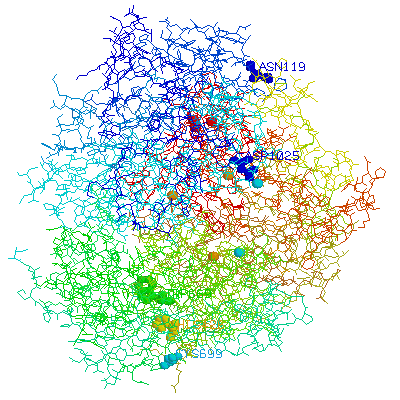
Copper Balance: Metallothioneins, Ceruloplasmin, and Nutritional Supplements
In the realm of trace element management within the human body, copper stands out due to its dual nature as both an essential nutrient and a potential toxin when present in excess. The body’s intricate system of checks and balances involves various proteins and pathways to maintain copper homeostasis, with a particular focus on the role of ceruloplasmin and metallothioneins (MTs), and the influence of key nutrients such as zinc, N-acetylcysteine (NAC), and vitamin B12.
Ceruloplasmin and Copper Transport: Ceruloplasmin functions primarily as a copper-carrying protein in the blood, facilitating the transport of this metal to necessary sites while preventing its accumulation in free, and potentially harmful, form. Regular measurement of ceruloplasmin levels provides insight into the body’s copper transport efficiency.
Metallothioneins: A Protective Response: MTs, a family of low-molecular-weight proteins, are central to copper homeostasis. They sequester excess copper, thus reducing its free form and mitigating potential toxicity. The synthesis of MTs is a response mechanism that can be upregulated by certain nutritional elements, especially zinc.
Zinc Supplementation: Zinc can help balance copper levels in the body. High doses of zinc can induce the intestinal synthesis of a protein called metallothionein. This protein has a higher affinity for copper than for zinc, so it will bind copper first and can prevent its absorption in the intestine, which may contribute to a reduction in total copper levels.
- Zinc also competes with copper for absorption in the small intestine, so increased zinc intake can reduce copper absorption.
- Adequate zinc status is important for the synthesis of ceruloplasmin, which is crucial for the proper transport and reduction of free copper in the body.
Molybdenum: plays a role in the metabolism of certain substances, including copper. It is a cofactor for an enzyme called sulfite oxidase, which is involved in detoxifying sulfites and also in the metabolism of purines and pyrimidines. While it does not have a direct role in reducing copper absorption like zinc, molybdenum can contribute to the overall mineral balance and can help with the excretion of copper by facilitating the breakdown of copper-containing compounds.
N-Acetyl Cysteine (NAC): NAC, known for its role as a precursor to cysteine, which is a precursor to glutathione and it offers a two-fold benefit in copper management. It enhances the conversion of homocysteine into glutathione, a vital antioxidant that aids in the protection against oxidative stress associated with copper imbalance. Moreover, glutathione is thought to influence the expression of MTs, linking NAC supplementation to improved copper sequestration.
Vitamin B12: The role of vitamin B12 in homocysteine metabolism is crucial, as it facilitates the conversion of homocysteine to methionine. This process not only reduces homocysteine levels, which if elevated can be deleterious to cardiovascular health, but methionine itself is a precursor for the synthesis of S-adenosylmethionine (SAMe), a critical methyl donor that influences the expression of MTs. Thus, vitamin B12 status is indirectly connected to the body's capability to regulate copper levels through MTs.
Glycine - is a critical component in the synthesis of glutathione, the body's most potent antioxidant. Alongside cysteine and glutamine, glycine is one of the three amino acids required to produce glutathione.
Vitamin B6 - is critical for the conversion of homocysteine to cysteine, which is subsequently used for glutathione synthesis. It doesn't directly facilitate the conversion of HCY to glutathione, but rather supports a crucial step in the pathway that leads to glutathione production.
Glutamine - is involved in the synthesis of glutathione in a different manner. Along with cysteine and glycine, glutamine is a necessary substrate for the production of glutathione. While it is not directly involved in the homocysteine to glutathione conversion, it is one of the three amino acids required to synthesize glutathione. Without adequate levels of glutamine, the body may not be able to maintain optimal levels of glutathione. Glutamine also serves as a source of nitrogen for the synthesis of other amino acids and is involved in various metabolic processes.
Glutathione (GSH) itself plays a role in the regulation of metallothionein (MT) synthesis, though the exact mechanisms can be quite complex and are still not fully understood. Here's a simplified explanation:
- Antioxidant Role: Glutathione is a key antioxidant in cells, helping to protect against oxidative stress. Oxidative stress can induce the expression of metallothionein, which also has antioxidant properties.
- Detoxification: Glutathione contributes to the detoxification of heavy metals and other harmful substances. When heavy metals like cadmium, mercury, and others are present, the body often responds by synthesizing more metallothionein, which can bind and neutralize these metals. The presence of glutathione can facilitate the detoxification process, indirectly leading to an increase in metallothionein as part of the body's defense mechanism.
- Zinc Homeostasis: Glutathione is also involved in cellular zinc homeostasis. Since zinc is a positive regulator of metallothionein, the interaction of glutathione with zinc can impact MT levels. Glutathione may help in redistributing zinc within the cell, and when zinc is released, it can then stimulate the production of metallothionein.
- Gene Expression: Metallothionein gene expression is complex and can be influenced by various signaling pathways within the cell. Glutathione levels can affect the redox state of the cell and the activity of transcription factors such as MTF-1 (Metal-responsive Transcription Factor 1), which binds to metal response elements (MREs) on the metallothionein gene, stimulating its expression.
Methionine’s Role in MT Production: Methionine serves beyond its capacity as a mere intermediary in homocysteine catabolism. It directly contributes to the synthesis of MTs by providing the necessary methyl groups required for the expression of these proteins, thereby playing a direct role in mitigating copper toxicity.
